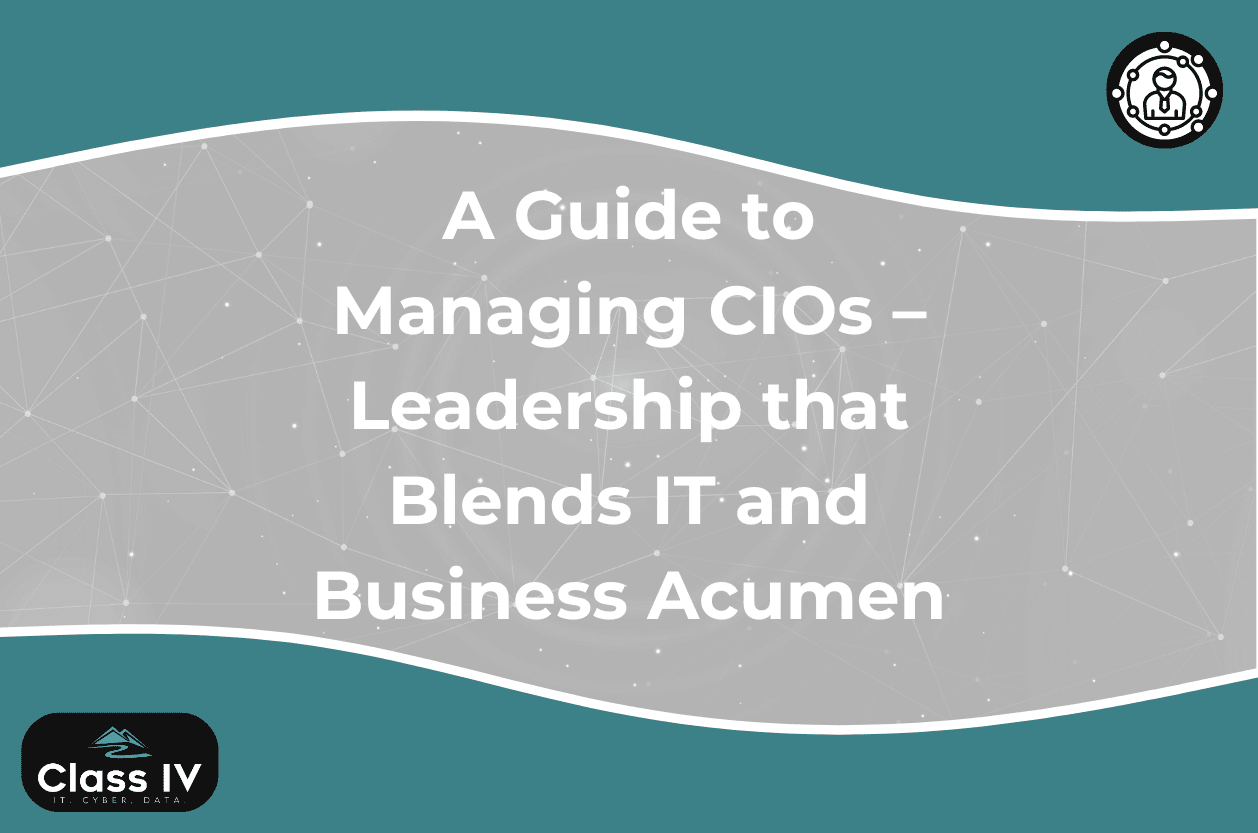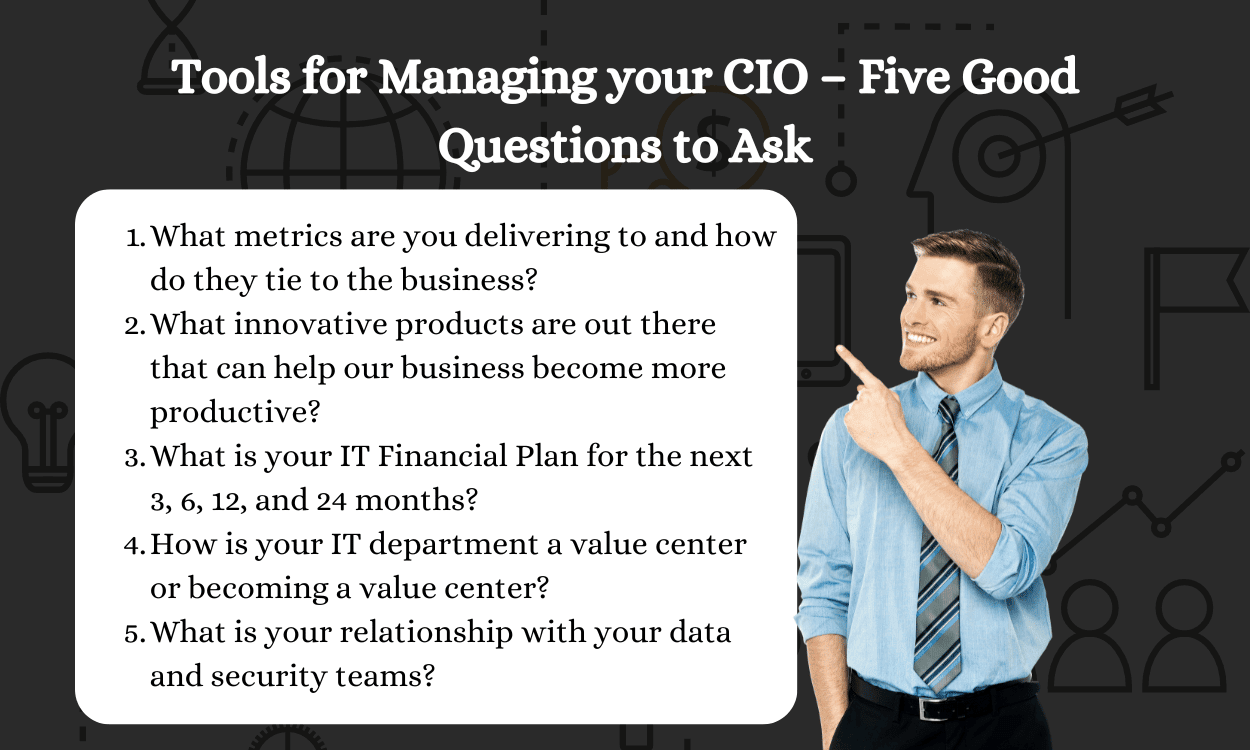
IT Departments have become a critical staple of the business environment. From start-ups to businesses founded hundreds of years ago, a technical team that enables and supports the achievement of success in the marketplace is critical. One of the major challenges in this is that technical teams and the management of them can often be difficult to understand and connect with because of the complexity of what those teams do. It’s difficult to find a CIO that blends a high degree of competency in technical details with a thorough understanding of the needs and goals of the business.
So how do you know if your CIO is performing to these high standards?
Signs your IT Team is Underperforming
Your CIO will be responsible for managing a strategy and a team that maintains your business’s technical environment. This technical environment needs to be focused on serving the needs of your business in a way that enhances the tools your people can use to be successful. It also needs to be appropriately funded and dependable. There are a series of responsibilities your CIO has in accomplishing this that can give you a window into red flags you want to pay attention to.
Integrations and Related Systems
Even if they exist in a bubble, IT environments are complex and always involve a variety of systems and applications that interact. Adding in the changing nature of the business as it competes day to day and this complexity is enhanced. A real danger signal for your CIO is reflected in any scenario where this set of relationships is misunderstood or underestimated. If you’re asking, “well, isn’t it more complicated than that?” and you CIO is saying it’s not, then you may have a problem.
IT Roadmap
The same way your business doesn’t exist as a point in time, neither does your IT environment. As your business grows and evolves, your CIO should have a thumb on that pulse with a roadmap that anticipates the needs of the business by understanding the path ahead. Many IT roadmaps are dictated by needs that are created to sustain itself, which becomes a self-reinforcing problem. Reactive roadmaps aren’t roadmaps, they’re anchors that keep your focus away from creating competitive advantages by diverting it towards fixing problems that often should have been anticipated in the first place.
IT Budget
IT is expensive when it works, and even more expensive when it doesn’t. The most dangerous situation to be in is not understanding the budget at all – from what has been spent to what is going to be needed. If your CIO can’t tell you where the money went then you’re definitely wasting money somewhere. If your CIO can’t tell you how much is needed with a high degree of confidence and accuracy, then you might as well be writing a blank check.
Performance and Delivery
There’s nothing worse than not being able to reach a strategic objective because the tools you were counting on aren’t there to execute. You need to be able to depend on your IT team to deliver on time. What this takes is a CIO who can do two things – give you a realistic and acceptable deadline, then meet it. Consistently meeting deadlines reflects either a lack of understanding in what it takes to get the job done or a lack of leadership in driving a team towards an accomplishment. Or both.
Leadership
Your CIO is responsible for a group of people who need to operate as a well-formed and well-managed team in order to deliver your product or service effectively. This is a very difficult quality to read in any individual, but there are some key indicators that can tell you that you’re way past the point of failure. The first is that your CIO is telling you everything is fine but your customers are screaming for better information and service. Blaming the customer is never an effective leadership tactic.
Another is a drain in talent. It can be frustrating to see a star employee leave for a better opportunity and that happens sometimes. When it becomes a trend that your most talented employees are leaving you may have a different kind of challenge. Talented employees also almost never quit on the spot. This is difficult to understand, but something you have to trust your gut on. Talk to those people when they leave, they may share issues with technology that have prevented them from reaching their aspirations.

Tools for Managing your CIO – Five Good Questions to Ask
You share responsibility and accountability for managing your IT department. That means you need to know how to manage your CIO effectively in order to enable that person to manage a high-performing IT department. Your attention to detail and a few key questions can serve as a great starting point for leaning into the challenge and being engaged in one of your the effective tools available – IT.
What metrics are you delivering to and how do they tie to the business?
You want to know that your CIO is managing a team that knows how to supports your organization and understands your business. If this is happening, then this is an easy question to answer and should lead to a more fulfilling discussion on what else can be delivered. If this question is a battle to work through, you should consider whether or not your CIO understands the integrations and related systems you depend on every day.
What innovative products are out there that can help our business become more productive?
Having a roadmap that looks ahead to where you want to be requires having the tools to get there when you need them. This requires anticipation of the business needs based on the goals and objectives you set. It also requires staying on the leading edge of where technology is headed, which professional CIOs must do to remain relevant. This question will give you some insight what is available for you to grow and should reflect a planning capability in knowing how long it will take so you have the tool when you need it instead of leaves you waiting for it because your CIO recommended starting that project when it should have already been finished.
What is your IT Financial Plan for the next 3, 6, 12, and 24 months?
Your financial plan should be in tight sync with your roadmap and reflect a command that your CIO has of the IT budget. Financial plans require foresight and vision to know what expenses are coming up and when so you can supply the support needed for your CIO. Your CIO needs to able to break down a financial plan over periods with a high degree of detail, especially in the nearer term, in a way that reflects their understanding of the investment required to support the business and the tools that are needed to evolve alongside it.
How is your IT department a value center or becoming a value center?
Your IT team should be a value center, and your CIO should be at the forefront of ensuring that it is. This may seem unattainable on the surface, but I would argue that it’s an existential need. Technology is a need for every business to function today. In today’s competitive environment if you’re not growing you’re failing. If every facet of your business doesn’t have a direct impact on increasing revenue, then it’s a problem. IT is not exempt from these truths.
What is your relationship with your data and security teams?
Great leadership requires a connection with all team members. A hallmark of great leadership is a meaningful and respectful relationship with the team members who have the hardest but most critical jobs. Data and security are at the core of the most complex and difficult to understand topics in IT and having a strong relationship with those teams shows an ability to lead and understand the most difficult parts of your IT department. It also backstops two of your greatest IT risks by showing a respect for the detail and criticality of secure data and environments.
Driving Results in IT Leadership
Technical tools are now unavoidable core components for running a business. This means that knowing how to manage an IT team is a critical function. This can be elusive for leaders with a focus on growing the business, and having tools to know your CIO is enabling you to do so is critical to ensuring IT doesn’t become a never-ending problem that drives cost instead of value.
At Class IV, we solve these kinds of problems every day. If you need help understanding what your IT department should be delivering and how to lead an organization that maximizes the value of technology, give us a call. We can help.


